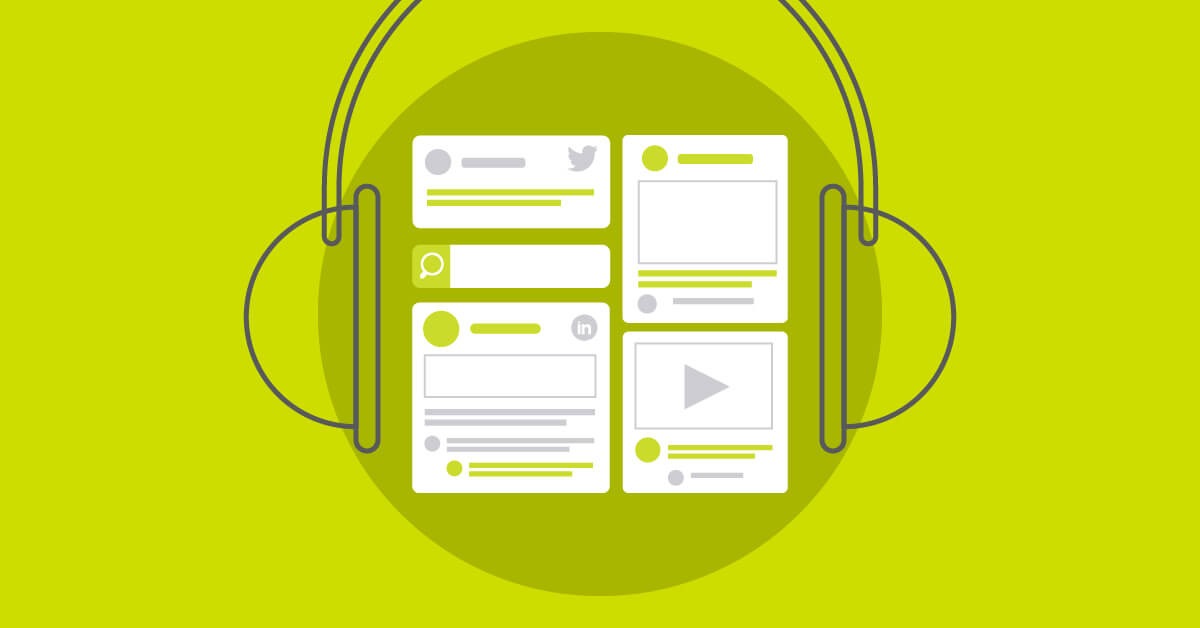Blog
How Social Listening Insights Support Business Strategy
|

Blog
How Social Listening Insights Support Business Strategy|

Social listening is the process of tracking and analyzing conversations and engagement across an organization’s social media channels. However, social listening is broader than the term implies. It extends beyond listening and requires communication teams to dig deeper than merely tabulating what their audiences are saying. Social listening analysis is not just about uncovering what people are saying but why they’re saying it, in what context and to whom.
Organizations that leverage social listening effectively can use insights to support their ensuing business strategy and marketing and communication programs. Social listening can provide an organization with valuable information that helps them to:
- Assess if the organization is living up to its purpose, mission and values by comparing what people say about the business to what it’s trying to achieve
- Quickly spot issues or emerging crises as new and unexpected topics begin trending about the organization
- Uncover purchase behavior and preference to inform marketing decisions for a new product or service launch
- Understand the organization’s audiences better, which helps it identify content opportunities that inspire conversation, engagement and action
- Create stakeholder journey maps to identify the moments that matter most to its audiences
Popular social listening tools include Sprout Social, Hootsuite, Zoho Social and Mention.
Using social listening to inform a communication strategy
Social listening can uncover insights to shape an organization’s communication strategy. It provides information about the type of content that resonates with audiences across social channels, which information drives conversion and conversations that influence users. Social listening can help pinpoint, for example, which content most effectively creates awareness and inspires people to learn more about a new product or service. It can identify if people click through to a webpage that provides more context on the product and assess how audiences engage with that link through comments and social shares. Understanding whether specific social content and web page information inspire people to enter the buyer’s funnel can inform future content and communication decisions. The organization can apply this same analysis to content produced for each stage of the buyer’s journey.
These insights, supported by robust social listening tools, can help the organization more fully understand what social conversations mean in the context of their marketing and communication strategy. Insights gained from social listening can influence a multichannel communication strategy because they inform the type of content the business should create and share across its channels. The insights can also influence brand strategy since the organization can uncover customer beliefs and assess what tone resonates best with audiences. Social listening can inform both how the organization says something and why it says those things.
An organization that uses an omnichannel communication strategy can use technology to take what it learns from social listening and automatically plug it into each customers’ CRM profile. It can log every customer engagement activity and track it in the CRM. The business can then trigger additional communication through whichever channel makes the most sense based on where that particular audience member is in their customer journey. Social listening analysis can inform what the business distributes and why because it provides an extra layer of sentiment (the attitude or opinion behind what someone says).
The importance of social listening guardrails
Social listening, however, can drain human and financial resources when implemented without the proper guardrails. It can become an endless pursuit if an organization spends its time looking for what people are saying versus drilling down to why and how they’re saying it.
Michigan State University fell into this trap when it was investigating the Larry Nassar sexual abuse case. The agency representing the university racked up a large bill tracking accounts of victims and their families, journalists, celebrities and politicians, then summarizing the conversations happening across social media. This investment reflected poorly on the university because the tracking focused more on capturing the volume of the conversation than on the insights critical analysis could have revealed. That analysis would have provided the university with insights it could then use to take positive action. Instead, they merely complied and sat on the information.
Social listening is important, but it’s only one piece of the puzzle. Organizations should take the information gathered from social media and cross-tabulate it with other insight-driven activities, like web, search and market analytics. Weaving all of these insights together helps them connect learnings to the business strategy. A social media report on what is happening doesn’t give the business the context it needs to make strategic decisions. Effective social listening drills down to the why, how and so what — and informs content, communication and business decisions.


